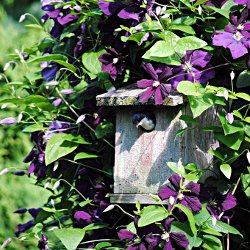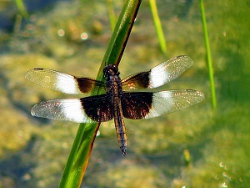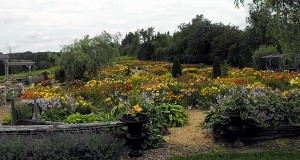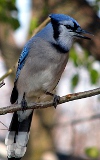 Newsletter
Newsletter
2010
/ Issue 12
IN THIS ISSUE: HOW TO PHOTOGRAPH WILD BIRDS - Part 4
In this instalment, I'll be discussing HOW TO CHOOSE A SUITABLE CAMERA AND LENS
BRAND: The first decision you have to make when you're purchasing a camera, is which brand to choose. Most bird photographers (including me) will tell you there are only two choices: Canon or Nikon. They are the best, and which one you choose is just a matter of personal preference. I suggest spending some time browsing the galleries at a website like www.birdforum.net - this will give you a taste of what the Nikon and Canon cameras can do.

Point and Shoot: I use a Canon S5 IS (pictured here to the right). It is a lightweight, relatively inexpensive camera (under $400) with a built-in 12x zoom lens which produces the equivalent of 432mm of reach at maximum zoom. With its built in Image Stabilization, this relatively small camera is great for taking hand-held photos. It produces good quality images, and I've found it to be very reliable. However, the point-and-shoot cameras do have some big drawbacks. These cameras have very small sensors - tiny compared to a full frame 35mm. This results in lots of 'noise' at ISO settings greater than 100. That means that you cannot shoot in low light situations without using very slow shutter speeds which will not produce a sharp enough image when shooting birds. Consequently, I leave my ISO set at 80, my aperture at 3.5, and only shoot when there is enough light so that I have shutter speeds of 1/250 or faster. This may seem (and is) very limiting, but when conditions are right I have produced some very good photos. I think the Canon S5 (and it's successors the SX10 and SX20) is a great low cost choice especially for the beginner.
Entry-level DSLR:
Canon's line of entry level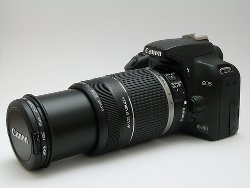
Semi-professional
DSLR: There is no limit to how much you can spend on camera gear,
but from my experience,
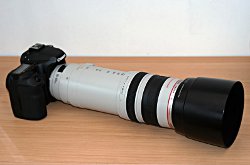
Next issue:
The final instalment in this series: Effective use of light and
background
THE READERS' PATCH
In this issue we're
featuring two great photos that were sent to us by Barry Kant. As you
can see, Barry has some beautiful Clematises in his garden, with a
nesting swallow as a centre piece!
He
also has some Baltimore Orioles visiting his feeders. I am so
envious!
![]()
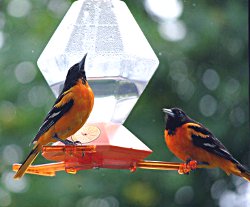
***********************
The Readers
Patch is
a space for your photos, stories, and/or comments.
Send anything
you'd like to share with us to: newsletter@birdingandmore.com
***********************
Here's a photo of a Widow Skimmer that I took during our recent
vacation.
If you like dragonfly photos, check out our
Wildlife gallery and our Vacation2010 gallery at www.birdingandmore.com
![]() ARTEMESIA
DAYLILIES
www.artemesiadaylilies.com
ARTEMESIA
DAYLILIES
www.artemesiadaylilies.com
Amazing flowers and friendly people.
This is where Elaine and I buy all of our daylilies
New posts have been added to the Birding and more blog.
Two new photo galleries have been added!
Daylilies
and
Vacation 2010
FUN FACTS ABOUT BIRDS
.
Blue Jays can imitate the call of hawks.
If you spend enough time around Blue Jays, you
know this is true. The Jay may use the hawk sounds as a warning to other
Jays, or to deceive other birds into thinking there is a hawk around.
When we began our garden in the spring of 2008 we decided to plant in stages due to the cost. We started at the front, leaving the back for the second or third year. We wanted to begin building the areas closest to the patio first so that we could enjoy the fruits of our labour as we relaxed
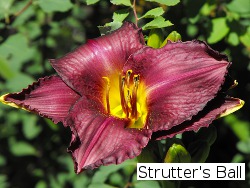 had intended! After bringing in topsoil for the entire area, adding
extra around the perimeter for the flower beds, and laying the sod, we
planted our priority shrubs and perennials down the first third or so on
both sides. Looking at the pictures taken then, it
had intended! After bringing in topsoil for the entire area, adding
extra around the perimeter for the flower beds, and laying the sod, we
planted our priority shrubs and perennials down the first third or so on
both sides. Looking at the pictures taken then, it
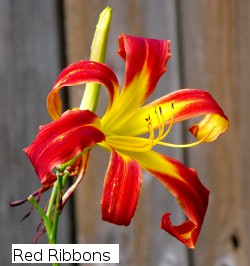 looks
pretty sparse but at the time the improvement was so great it felt like
a miracle and we enjoyed sitting on our patio as much then as we do now!
The foundation of a beautiful garden was being laid, and this year (just
two seasons later) we see it coming to fruition and are thrilled that it
is turning out just as we had dreamed.
looks
pretty sparse but at the time the improvement was so great it felt like
a miracle and we enjoyed sitting on our patio as much then as we do now!
The foundation of a beautiful garden was being laid, and this year (just
two seasons later) we see it coming to fruition and are thrilled that it
is turning out just as we had dreamed.Although we had intended to leave the area along the fence at the back of our yard, we did plant a few shrubs that first season so that they'd have the extra time to grow – a couple of Honeysuckles, a Bridalwreath spirea, a Chokeberry and a Dogwood. Go to our website www.birdingandmore.com and check out the “Our Garden Before and After” Gallery to see the beginnings and then “Our Garden” for more recent photos. We also built a small rockpile and began a brushpile as escape hideaways for the birds and other small wildlife. We thought that was enough for a start but then, during a visit to my mother's, we saw her garden of daylilies... we just had to find out where she had bought them!
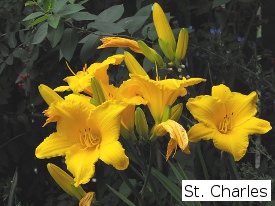
Joe Bertrand and Al Johnson run Artemesia Daylilies near Priceville, Ontario. They've been in business at their farm for the past 12 years and currently have 850 cultivars, the bulk of them being recent introductions and some of them their own hybrids, showcased in their 58 display beds and 82 production field beds. When you pull in to their driveway it's like looking over a sea of
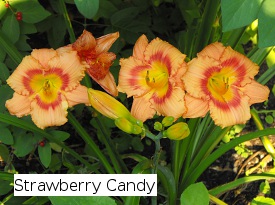 colour!!
Visit their website at
www.artemesiadaylilies.com
to see all that they
offer – we
bought 8 different
daylilies that
September and then during our vacation a couple of weeks ago we took a
day trip to see them and bought 6 more. We'd love to have
even more but just don't have the room or enough full sun areas in our
garden (they prefer at least 6 hours of sun per day). We'll be working
on our front yard within the next year or so and an island of daylilies
just might be what we need there!! Joe and Al, we'll be back!
colour!!
Visit their website at
www.artemesiadaylilies.com
to see all that they
offer – we
bought 8 different
daylilies that
September and then during our vacation a couple of weeks ago we took a
day trip to see them and bought 6 more. We'd love to have
even more but just don't have the room or enough full sun areas in our
garden (they prefer at least 6 hours of sun per day). We'll be working
on our front yard within the next year or so and an island of daylilies
just might be what we need there!! Joe and Al, we'll be back!If you'd like to see pictures of the daylilies that bloomed in our garden this year, check out our new Daylily Gallery on our website– I've included a couple of photos here to wet your appetite...
If you liked our newsletter
please pass it along to your friends and family.
Subscriptions are free! Just send an
email to: newsletter@birdingandmore.com
Copyright © 2010 Garry Kirsch www.birdingandmore.com
If you wish to cancel your subscription send an email to unsubscribe@birdingandmore.com
